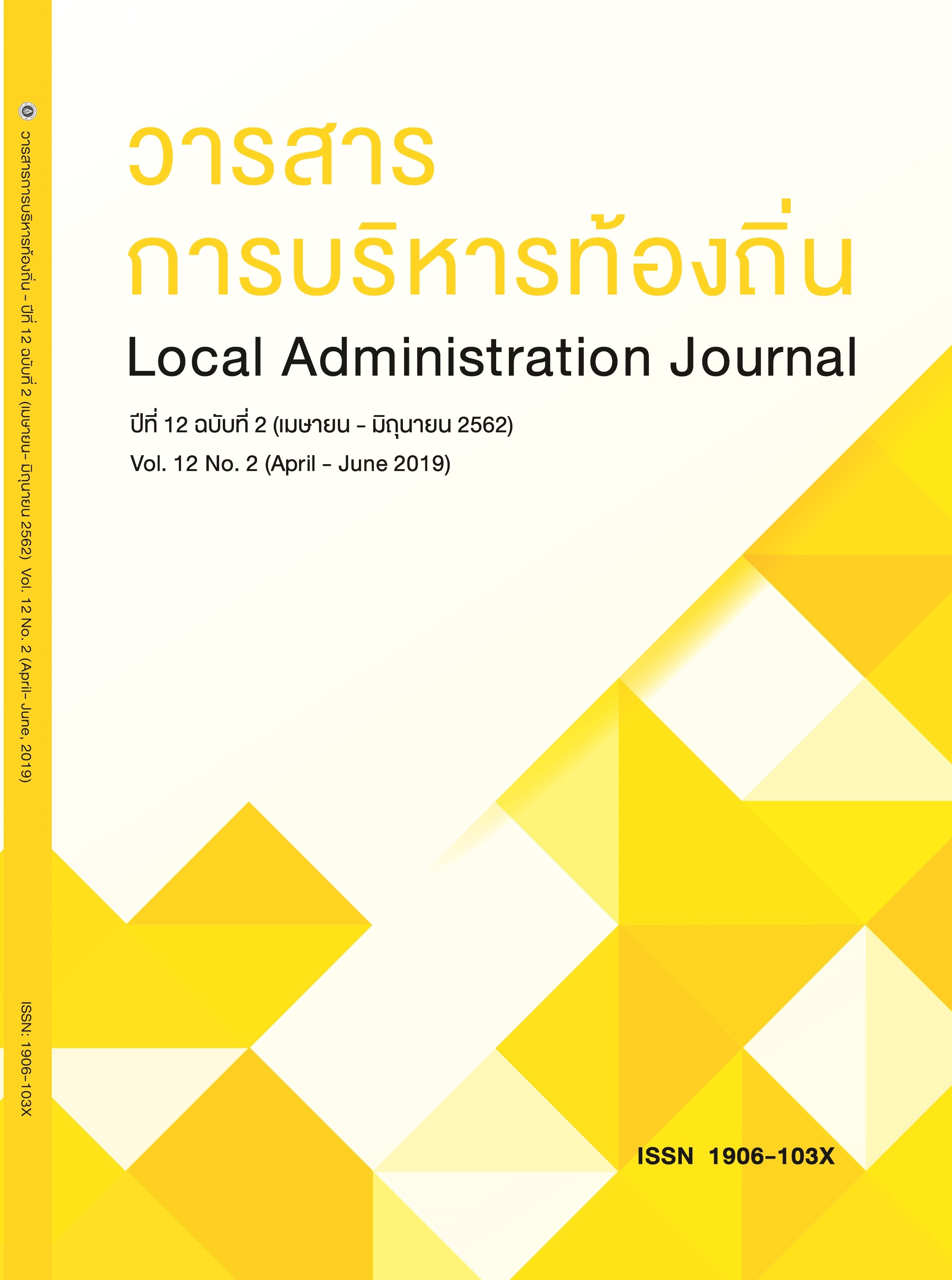Best Practices and Best Fit Model of Thai Public Human Resource Management
Keywords:
Best practice, best fit, Thai public human resource managementAbstract
Organizations believe that humans are the most important resource. Therefore, organizations have turned their attention to the planning and implementation of various types of integration into human resource management in the organization. The best practices model is one of the tools that are used by organizations to increase their operational quality and productivity. It is a tool that helps organizations to develop quickly and reduce the time they take to improve their performance. Learning from the experiences of those who have accomplished provides valuable guidelines for organizational development. Another concept used to increase their operational quality and productivity is the best fit model which can be adapted to suit each situation of the organization. This article is intended to study the best practice and best fit concepts in human resource management and, particularly, the best practice and best fit concepts in the context of Thai public human resource management
References
นิสดารก์ เวชยานนท์. (2554). การบริหารทุนมนุษย์เชิงกลยุทธ์เพื่อเพิ่มมูลค่า. กรุงเทพฯ: สถาบันบัณฑิตพัฒน-
บริหารศาสตร์. โครงการเอกสารและตำราคณะรัฐประศาสนศาสตร์.
วิจารณ์ พานิช. (2547). การจัดการความรู้ฉบับนักปฏิบัติ. (พิมพ์ครั้งที่ 3). กรุงเทพฯ: สุขภาพใจ
สถาบันเพิ่มผลผลิตแห่งชาติ.(2545). กรณีศึกษา Best Practices : สารสนเทศและการวิเคราะห์. กรุงเทพฯ: สถาบันเพิ่มผลิตผลแห่งชาติ.
สำนักงานคณะกรรมการข้าราชการพลเรือน. (2548). คู่มือสมรรถนะราชการพลเรือนไทย. กรุงเทพฯ: สำนักพิมพ์ พี.เอ.ลิฟวิ่ง.
________. (2560). ข้าราชการไทยกับการขับเคลื่อนสู่ประเทศไทย 4.0. สืบค้นเมื่อ 8 มิถุนายน 2562, จาก https://www.ocsc.go.th/sites/default/files/ attachment/page/civil_officer_th_4.0.pdf.
Armstrong, M. (2006). A Handbook of Human Resource Management Practice. London:
Kogan Page Publishers.
Beardwell, J. & Claydon, T. (2007). Human Resource Management: a contemporary approach. (5th ed). Englewood Cliff: Prentice Hall.
Boxall, P. & Purcell, J. (2003). Strategy and Human Resource Management. Basingstoke: Palgrave Macmillan.
Cappelli, P. & Crocker-Hefter, A. (1996). Distinctive Human Resource Are Firms Core Competencies. Organizational Dynamic ,24(3), 7-22.
Enz, C. and Siguaw, J. (2000). Best practices in Human Resources. Cornell Hotel and Restaurant Administration Quarterly, 41(1), 48-61.
Fombrun, C., Tichy, N., & Devanna, M. (eds). (1984). Strategic Human Resources Management. New York: Wiley.
Hadleigh, M. (2004). HRM Best Practice. Otago Management Graduate Review, 2, 25-37.
Hofstede, G. (1997). Cultures and Organizations: Software of the Mind. London: McGraw-Hill
________. (2010). Cultures and organizations: software of the mind. (3rd ed), London: McGraw-Hill.
Hughes, T. P. (1971). Elmer Sperry: Inventor and Engineer. Baltimore: Johns Hopkins University Press.
Johnson, E. (2000). The practice of Human Resources Management in New Zealand: Strategy and Best Practice? Asia pacific Journal of Human Resources, 38(2), 69-83
Kearns, P. (2010). HR strategy: creating business strategy with human capital (2nd ed). Burlington: Routledge.
Lawler, E. (1996). The Design of Effective Reward Systems. In Motivation and Leadership at Work. (6th ed). New York: McGraw Hill International Press.
Luthans, F., & Peterson, S. (2003). 360-Degree feedback with systematic coaching: Empirical analysis suggests a winning combination. Human Resource Management, 42(3), 243-256.
Marchington M. & Grugulis I. (2001). “Best practice” human resource management: perfect opportunity or dangerous illusion? The International Journal of Human Resource Management, 11(6). 1104-1124.
Messmer, M. (2004). Developing effective performance reviews. Strategic Finance, 85(9), 13-14.
Miles, R. & Snow, C. (1978). Organizational Strategy, Structure and Process. New York:
McGraw-Hill.
Pfeffer, J. (1994). Competitive Advantage Through People: Unleashing the Power of the Workforce. Boston: Harvard Business School Press.
. (1998). The Human Equation: Building Profits by Putting People First. Boston: Harvard Business School Press.
Pfeffer, J., & Veiga, J. (1999). Putting people first for organizational success. Academy of Management Executive, 13(02), 37-48.
Schuster, J. & Zingheim, P. (1992). The New Pay. San Francisco: Jossey-Bass.
Wellins, R.S., Byham, W.C., & Wilson, J.M. (1991). Empowered teams: Creating self-directed work groups that improve quality, productivity, and participation. San Francisco: Jossey Bass.
Wheelan, T.L., Hunger, J.D. (1995). Strategic Management and Business policy. (5th ed). Reading: Addison – Wesley Longman.
Translated Thai References
Office of the Civil Service Commission. (2005). Handbook of Thai Civil Competency. Bangkok: P.A. Living Publishing. (In Thai)
________. (2017). Thai government officials and driving to Thailand 4.0. Retrieved June 8, 2019, from https://www.ocsc.go.th/sites/default/files/attachment/page/civil_officer_th_4.0.pdf. (In Thai)
Panich, V. (2004). Knowledge Management Practice Edition (3rd ed.). Bangkok: Sukkhapabjai Publishing. (In Thai)
Thailand Productivity Institute. (2000). Best Practices Case Study: Information and Analysis. Bangkok: Thailand Productivity Institute. (In Thai)
Wedchayanon, N. (2011). Strategic human capital management to increase value. Bangkok: The National Institute of Development Administration (NIDA). (In Thai)
Downloads
Published
How to Cite
Issue
Section
License
The copyright of all articles published in the Local Administration Journalis owned by the College of Local Administration, Khon Kaen University.



